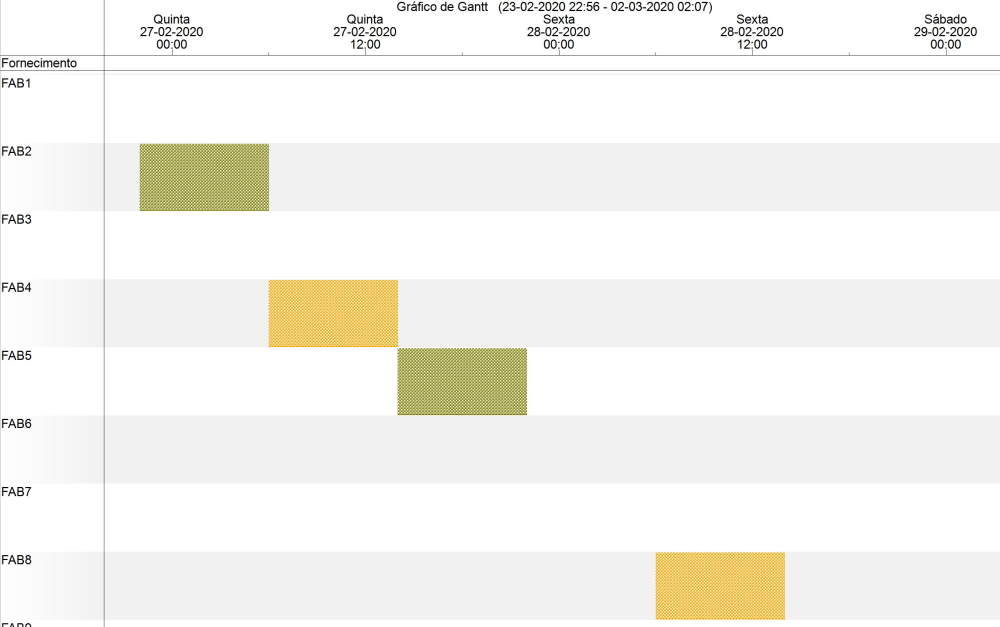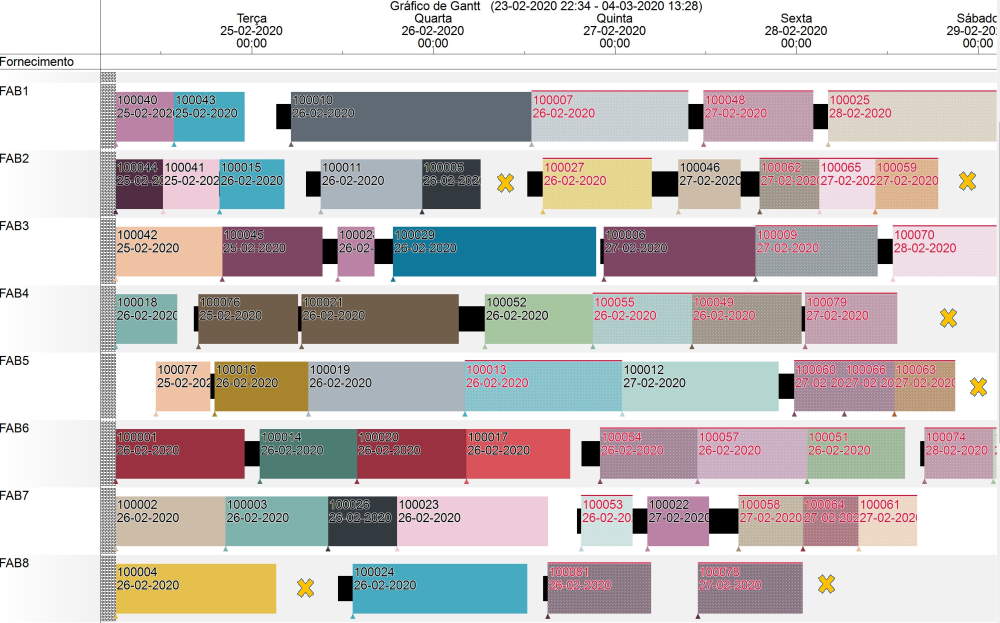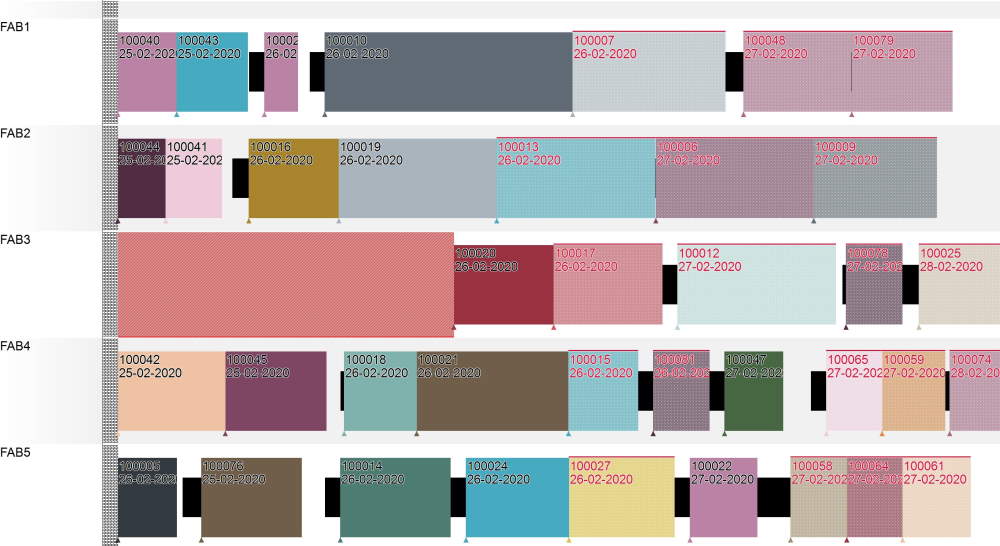Programming and Maintenance: The synergy between APS and PMS

In theory, maintenance management and production scheduling appear to be closely linked and interconnected processes. After all, they manage many common resources and share the mes mes availability and efficiency . However, the integration between them is underexplored in current Brazilian industrial practice. And I understand: both areas have very limited human resources and low future visibility, with considerable uncertainty. Unfortunately, management needs to be as streamlined as possible, focusing on what is most critical, urgent, and known . LIMITATIONS DUE TO LOW VISIBILITY: Those who work with TPM (Total Productive Maintenance) already have a more solid foundation for joint action with PPC , as planned maintenance, whether preventive or predictive, is one of its pillars. However, this planning is typically carried out within the Maintenance department, and information rarely reaches PPC formally. The information comes in a phone call, a call , or a hallway conversation, when departments interact and maintenance informs, " Look, PPC , machine X will have a 4-hour maintenance this coming Thursday at 2 p.m.. " This situation is aggravated for those who don't use APS software , because mes if the maintenance plan has a horizon longer than a week, PPC can't accurately see more than a few days into its own production schedule. Therefore, maintenance that's further down the line doesn't have a clear purpose. Ultimately, this scenario of low visibility and scheduling accuracy limits synergy between departments. On the other hand, when we have a production schedule through APS , we can improve these processes. APS + TPM FOR PLANNING When starting to use Opcenter APS , a very interesting point to understand the finite production capacity is to bring planned maintenance into the Gantt chart so that it can already be considered when scheduling, as in the image below. Therefore, an operation cannot be scheduled at this time on a resource that will already be committed to maintenance.

Figure 1 - Gantt Preprogramming with predictive green and preventive maintenance in orange
Opcenter APS key user , but ideally they can be imported from another system, such as the maintenance module of your ERP, MES , or a specialized maintenance system. A next step toward synergy may arise when maintenance doesn't need to occur exactly on that specific day and time, but rather within a specific ideal period. This allows for accurate maintenance allocation after the PPC analyzes the production schedule itself . For example, predictive maintenance software can inform the APS when maintenance will be scheduled and schedule it, as shown in Figure 1. However, it could also create a maintenance request to be allocated to a specific period. The PPC to the APS, respecting the maintenance limits and determining the best time for this maintenance to occur with minimal disruption to production. Because the APS considers the synchronization between operations and each resource's shifts, it becomes possible to visualize situations in which maintenance scheduled for the morning or afternoon shift affects production efficiency. This impact on efficiency can occur not only for the resource undergoing maintenance but also for subsequent operations that depend on that resource's production. In other words, the connection between maintenance needs and PPC needs through integrated scheduling maximizes efficiency gains. Of course, implementing this change isn't simple; you need a well-structured process, with responsible parties and deadlines for these new activities. It's also necessary to add more layers of integration between systems, as the APS will also return scheduled maintenance dates. Even so, the efficiency gains and improved visibility benefit the initiative.


Potential gaps for maintenance fitting
Figure 2-Post-program gantt with potential gaps for maintenance allocation
BUT WHAT ABOUT CORRECTIVE MAINTENANCE? Corrective maintenance is perhaps the most critical component to consider in an APS/EPR/ MES , given the urgent need for agility in responding PPC can have. However, precisely because of the urgency and scarcity of resources to standardize processes, many industries resolve these issues outside the system. First, this poses a problem for maintenance itself, as it doesn't record downtime history and compromises indicators like MTBF (Mean Time Between Failures ) and MTTR (Mean Time to Repair) . Second, if this isn't incorporated into the system, the APS will rely on manual intervention by the programmer to input corrective maintenance and then reschedule production. This manual process is viable, but it loses agility . A good integration between the ERP or MES with the APS allows that, when a corrective maintenance event occurs, the APS can already block the resource during the expected time for diagnosis, the MTTD (Mean Time To Detect) , as well as update the maintenance duration according to the MTTR for that type of problem, once it has been diagnosed.

Figure 3 - Gantt with Red Red Programming and Corrective Maintenance with automatically imported by MTTR
It is important to understand that very short stops probably do not impact production programming (nor reprogramming), as they are very short -term events without sufficient expression (the impact of these problems can be measured by adherence to programming ). However, larger stops or extremely critical resources may require an immediate response and this agile integration can become a great differential. So, did you like the content?
And how can neo help your industry?
NEO Engenharia de Produção is a Siemens Smart Expert Partner and offers solutions that include business analysis and APS software . We've created a new concept that values cutting-edge technology and technical excellence, while mes believing in human sensitivity, creative work, and personalized, committed relationships. Contact us using the form below or via WhatsApp to learn more about our solutions and schedule a personalized analysis tailored to your business needs. Schedule your production with experts in technological solutions.

.png)